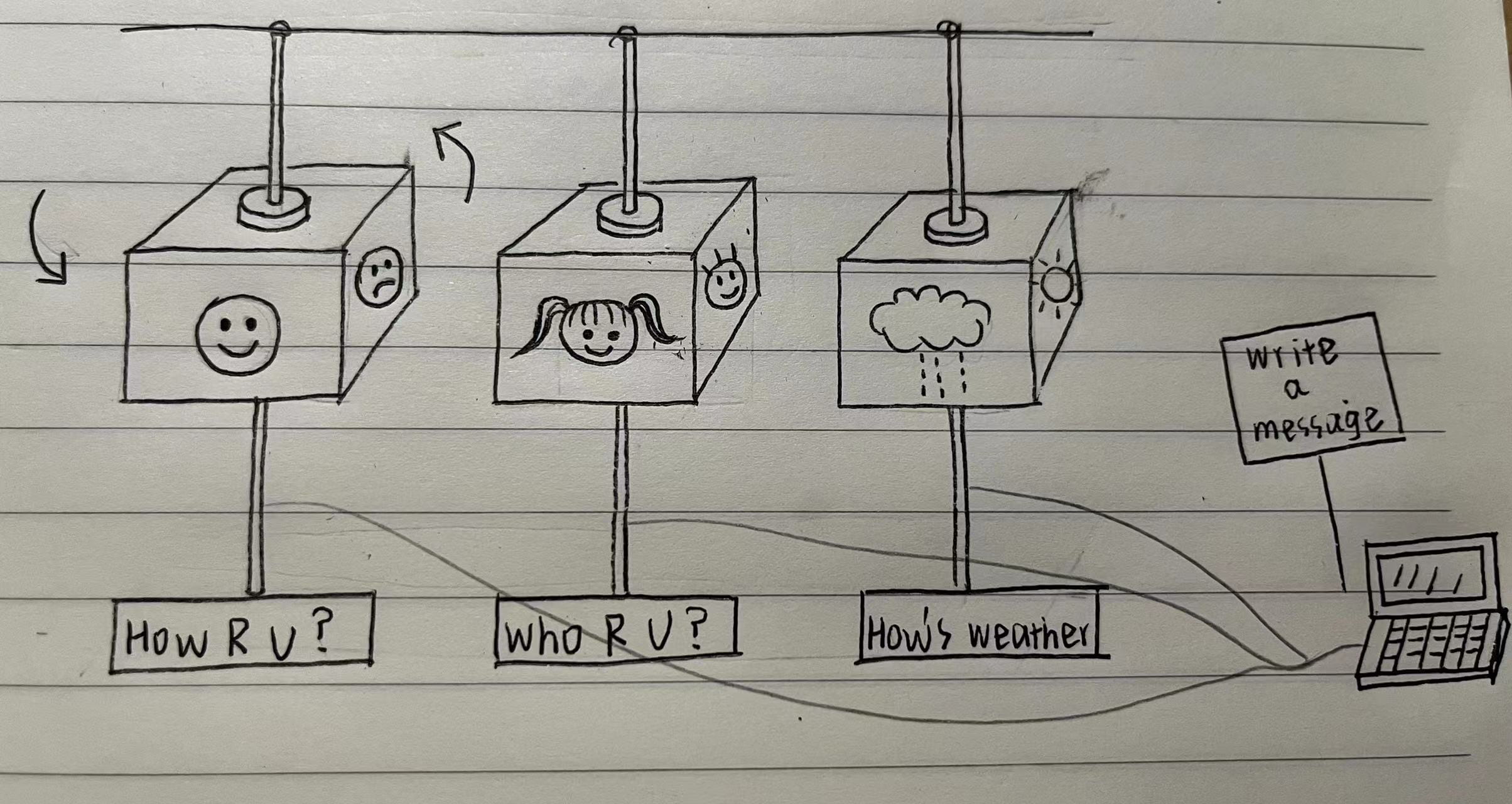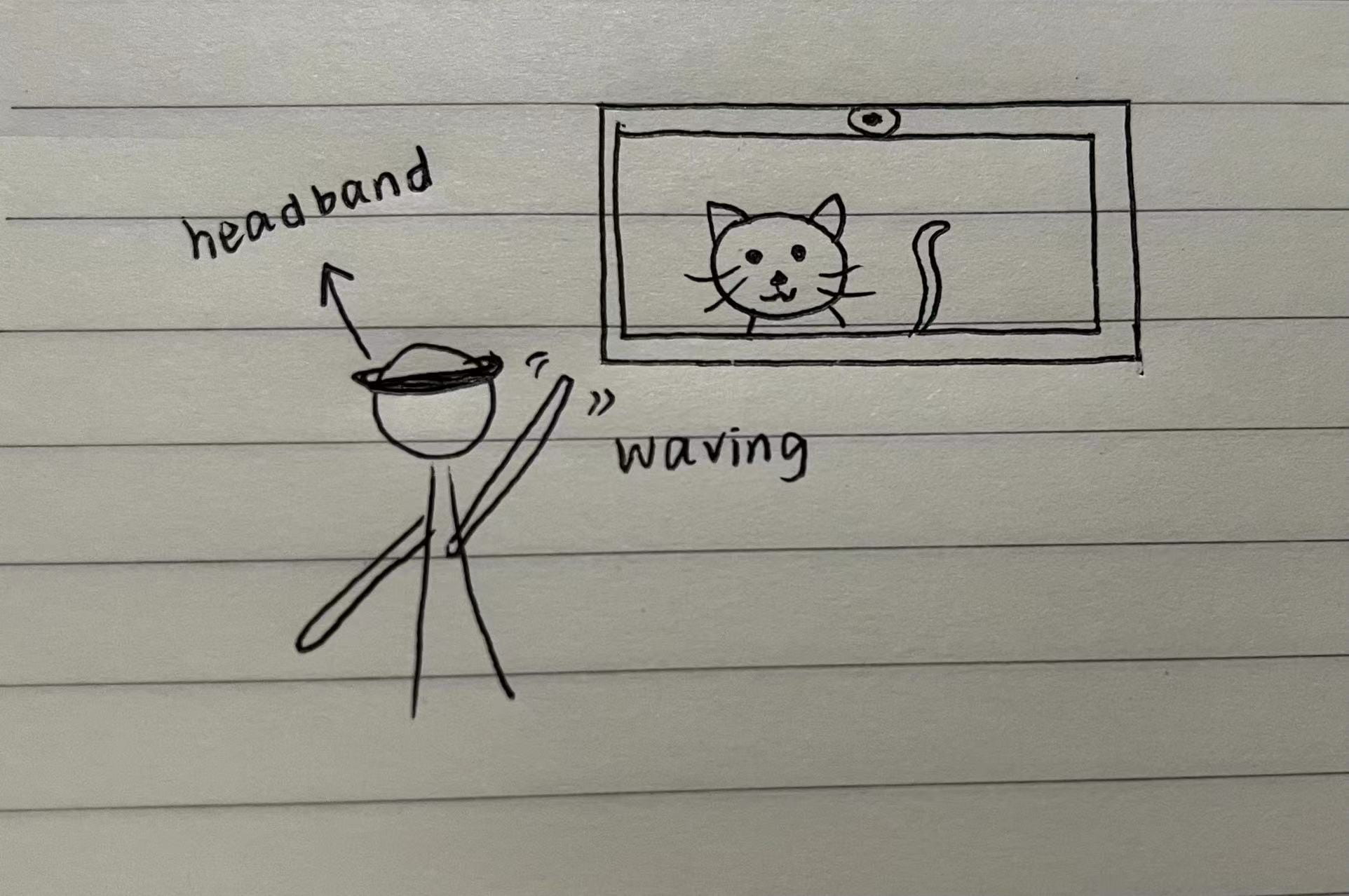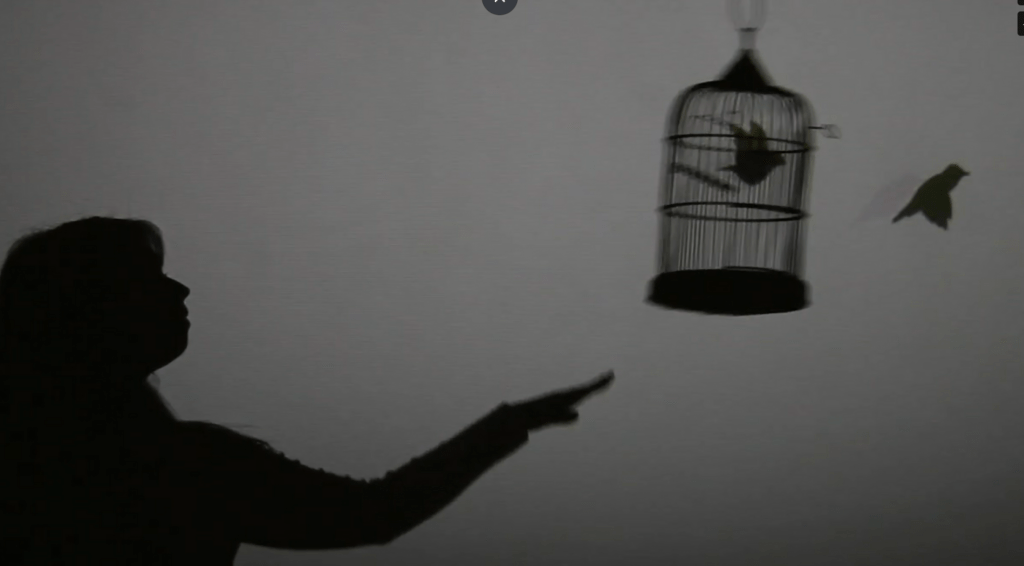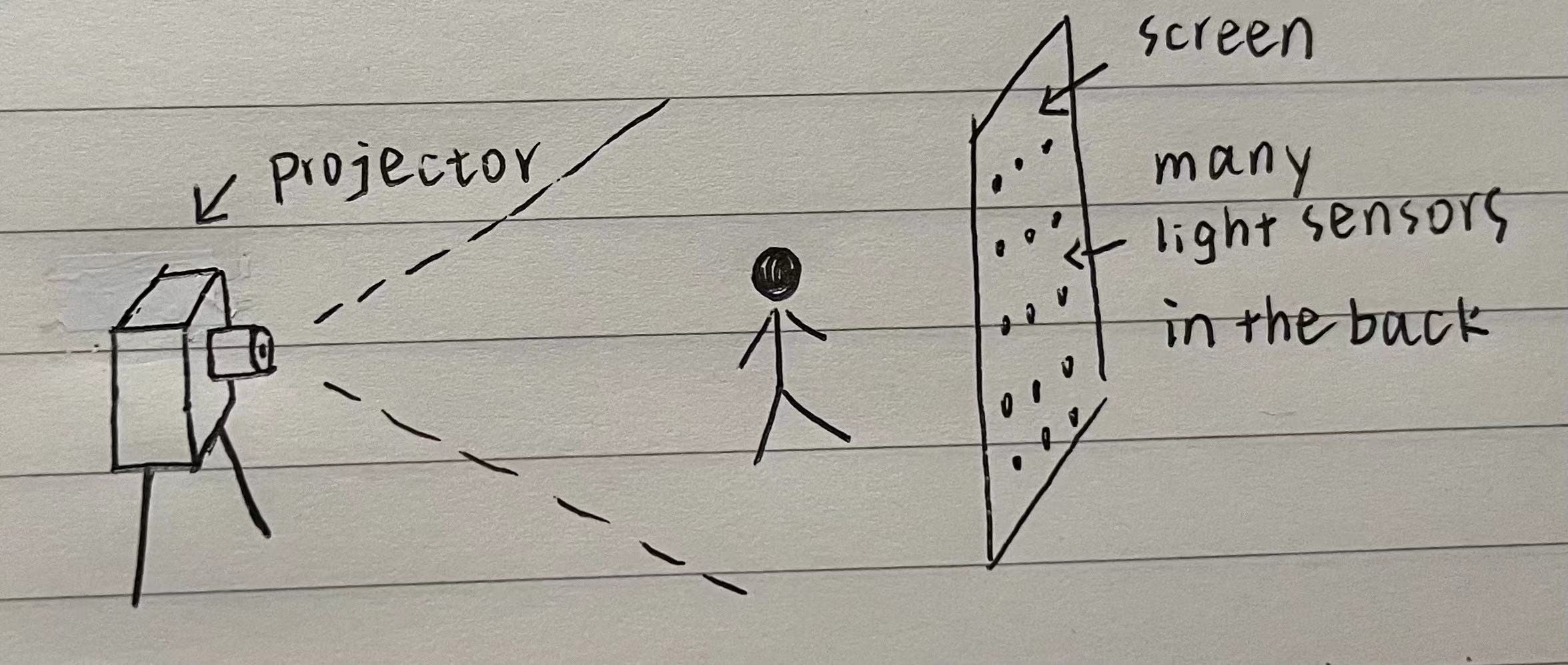1. Message from the past
Topic: Wandering in a place, I always wonder what people who were here once were thinking about. In Ernest Edmonds’s article, he mentioned that a good project can be communicating. And the first project I researched (the Door) is also inspiring, for it is an amazing project that interacts with people by connecting people from two different places. So, I came up with an idea that enables people to get a special message from the past based on their different interactions and enables them to also write a message to the people who will come here in the future.
Mechanism: The main engagement way is turning and writing.
The mechanism behind is similar to this design (all references see at the bottom):

The visitor can flip the cube (card) according to their mood, gender, weather, or even hobbies. With different question prompts under each column, people can choose the picture they like or the picture that best answers the questions and turn it toward themselves.

And, then the installation will recognize your choice and give you a message that someone in the past sent to you (when sending the message, the computer will ask you to whom you want to send the message, you have to pick the other person’s gender, mood, and weather… ). So, the design can make people feel like they are actually communicating across the time, sharing their ideas and feelings, or even sending a short note of encouragement to the future.
2. The Pet
Topic: In my childhood, I have these games on QQ where I can keep a digital pet and I have to feed them or clean them regularly. But, in such games, the user can only click on the mouse to interact with the pet. I wonder, will it be better, if the user can use some gestures or movements to interact with the digital pet (such as waving or nodding one’s head)?
Mechanism: The user can wear a headband or wear gloves allowing the computer to detect their movements (or we can use infrared sensors) and thus the computer can transform the message into processing, which will change the pet’s states or movements accordingly.

3. The shadow
Topic: Shadow is an abstract thing we often see in our daily life, and I especially like how the shadow transforms our 3D body into a 2D reflection on the ground or the wall. What if we can turn the shadow into part of a picture and let the shadow trigger some interesting animations along the way? Note that this project might need to be used in a dark room.
Mechanism: Maybe, by using multiple infrared sensors or light sensors, the computer can detect the user’s position or the shape of the shadow so that it can trigger some animations accordingly.
Below is a project that inspires me:

So, my device would look like this:

References;
1.https://www.pinterest.com/pin/793266921879874257/
2.https://www.pinterest.com/pin/113575221823501956/